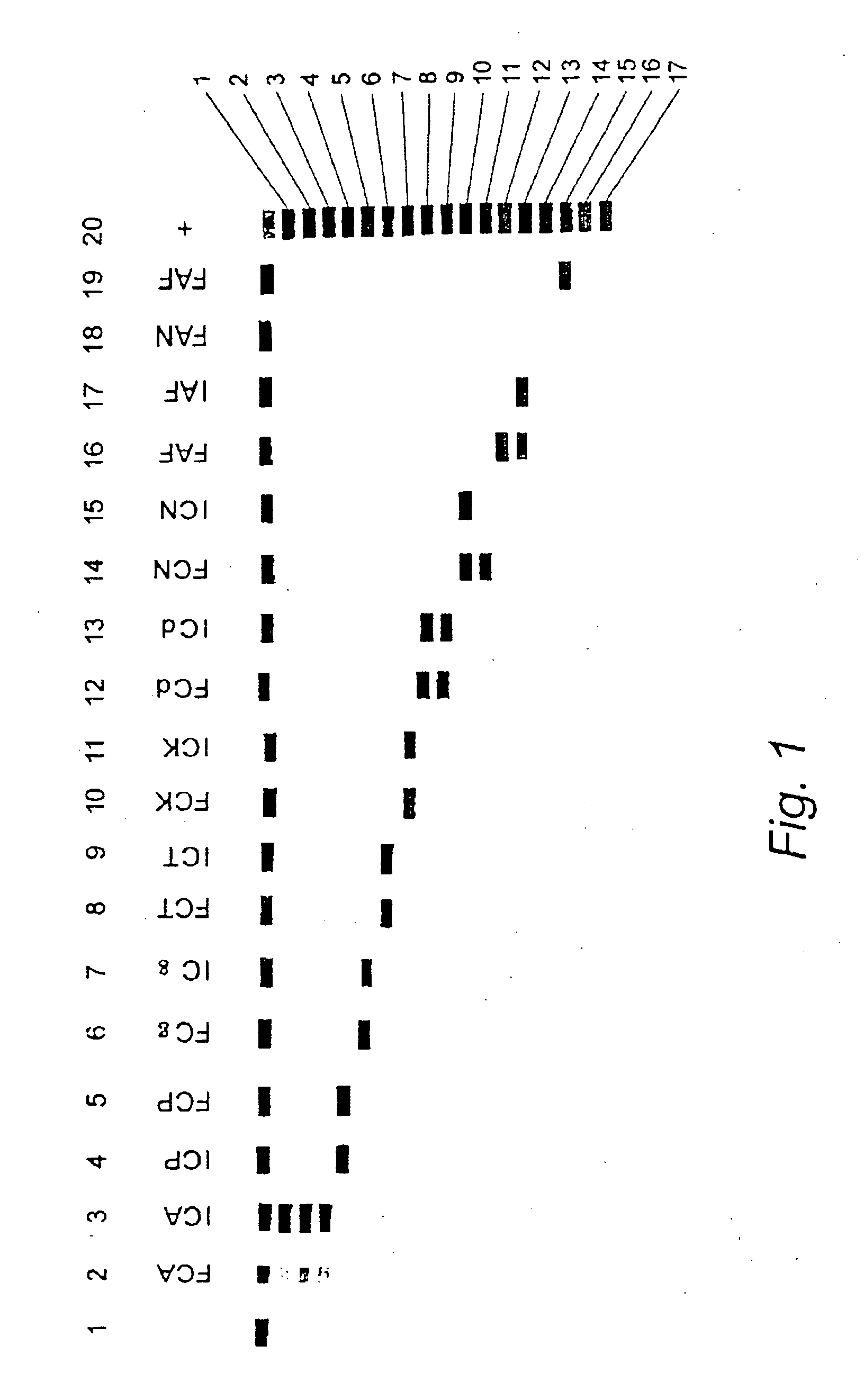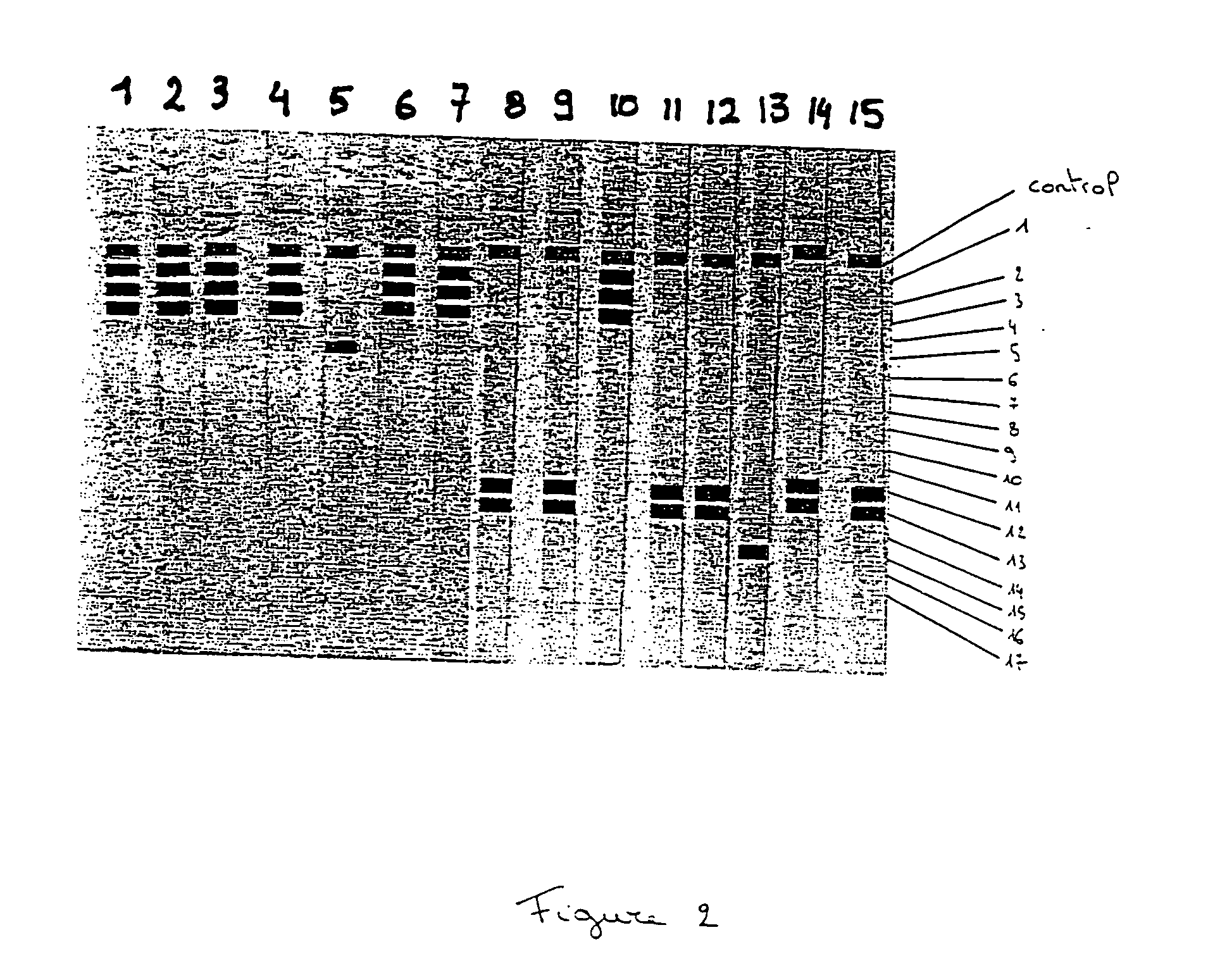Nucleic acid probes and methods for detecting clinically important fungal pathogens
a technology of nucleic acid and pathogens, applied in the field of nucleic acid, can solve the problems of increasing the incidence of infectious diseases, complicating the course, and affecting the survival rate of patients, and achieve the effect of enhancing the functionality of the diseas
- Summary
- Abstract
- Description
- Claims
- Application Information
AI Technical Summary
Benefits of technology
Problems solved by technology
Method used
Image
Examples
examples
[0189] 1. Specificity Testing of the Oligonucleotide Probes.
[0190] 1.1. Nucleic Acid Extraction.
[0191] A rapid extraction method based on physical disruption of the fungal cells followed by crude separation of the cell debris from the genomic DNA was used for the production of DNA from single colonies of yeasts (Roberts, 1997). For filamentous fungi, a more elaborate sample preparation method based on a combination of beadbeating and lysis with a GuSCN buffer followed by capturing of the DNA on silica was used.
[0192] 1.2. PCR Amplification
[0193] 20-50 ng genomic DNA or 5 μl of DNA extracted by the rapid extraction procedure described above were included in the PCR reaction. PCR reactions contained per 100 μl reaction: 200 μM of each dNTP's, 1×Taq buffer, 3 mM MgCl2, 15% glycerol, 40 pmol of each biotinylated primer (ITS5 and ITS4 for amplification of the full ITS region, ITS5 and ITS2 for amplification of ITS-1 only), 1 U Uracil N glycosylase and 2.5 U Taq polymerase. PCR therma...
PUM
| Property | Measurement | Unit |
|---|---|---|
| temperature | aaaaa | aaaaa |
| width | aaaaa | aaaaa |
| restriction length polymorphism | aaaaa | aaaaa |
Abstract
Description
Claims
Application Information
 Login to View More
Login to View More - R&D
- Intellectual Property
- Life Sciences
- Materials
- Tech Scout
- Unparalleled Data Quality
- Higher Quality Content
- 60% Fewer Hallucinations
Browse by: Latest US Patents, China's latest patents, Technical Efficacy Thesaurus, Application Domain, Technology Topic, Popular Technical Reports.
© 2025 PatSnap. All rights reserved.Legal|Privacy policy|Modern Slavery Act Transparency Statement|Sitemap|About US| Contact US: help@patsnap.com


